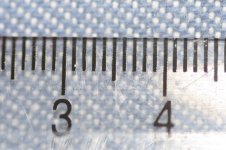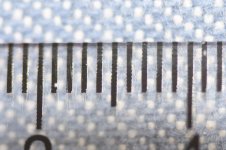Hi ALL
Can anyone please give me some advice on what macro lens i would need for taking photos of small beetles.
My camera is a 30D.
At the moment i have a canon EF100mm F2.8 macro usm for butterflies and dragonflies, but i cannot get as close as i would like with this lens.
Cannon have a EF-S 60mm F2.8 macro usm, will this lens be what i need?
Any info will be great.
Many thanks
Can anyone please give me some advice on what macro lens i would need for taking photos of small beetles.
My camera is a 30D.
At the moment i have a canon EF100mm F2.8 macro usm for butterflies and dragonflies, but i cannot get as close as i would like with this lens.
Cannon have a EF-S 60mm F2.8 macro usm, will this lens be what i need?
Any info will be great.
Many thanks





